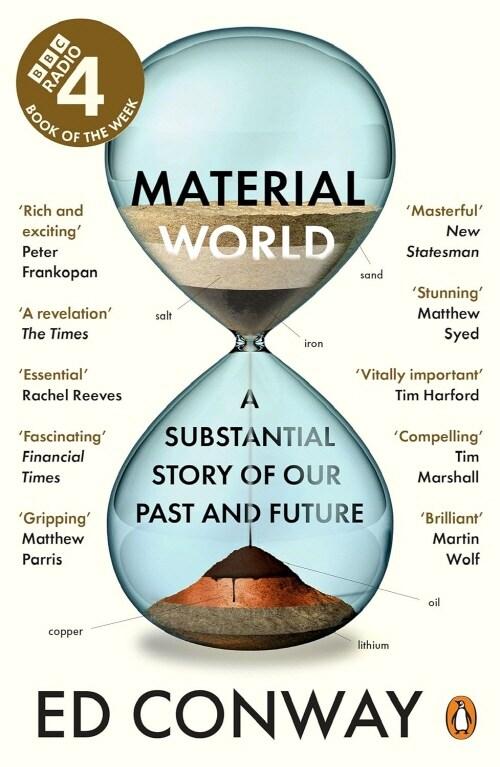책 이미지
![[eBook Code] Lessons in Corporate Finance](/img_thumb2/9781119537892.jpg)
책 정보
· 분류 : 외국도서 > 경제경영 > 기업재정 > 일반
· ISBN : 9781119537892
· 쪽수 : 544쪽
· 출판일 : 2019-04-08
목차
About the Authors xiii
Acknowledgments xv
Preface xvii
Chapter 1 Introduction 1
Two Markets: Product and Capital 2
The Basics: Tools and Techniques 3
A Diagram of Corporate Finance 4
A Brief History of Modern Finance 5
Reading This Book 6
Part One Financial Health of a Firm and Cash Flow Management
Chapter 2 Determining a Firm’s Financial Health (PIPES-A) 11
The Conversation with the Banker Is Like a Job Interview 11
Starting with the Product Market Strategy 13
Is PIPES Profitable? 14
Doing the Math 14
Sources and Uses of Funds 16
Ratio Analysis 20
The Cash Cycle 26
Summary 28
Chapter 3 Pro Forma Forecasts (PIPES-B) 31
First, Let’s Take a Closer Look at Ratio Analysis 31
Pro Forma Forecasts 33
Circular Relationships 40
Back to (Forecasting) the Future 42
Projecting Out to 2018 and 2019 43
Evaluating the Loan 45
Summary 50
Appendix 3A: Accounting Is Not Economic Reality 52
Chapter 4 The Impact of Seasonality on a Firm’s Funding (PIPES-C) 57
Monthly Pro Forma Income Statements 58
Monthly Pro Forma Balance Sheets 60
A Different Picture of the Firm 68
Summary 72
Appendix 4A: PIPES Monthly Pro Forma Income Statements and Balance Sheets, 2018 73
Appendix 4B: PIPES Monthly Pro Forma Income Statements and Balance Sheets, 2019 76
Part Two Firm Financing and Financial Policies
Chapter 5 Why Financing Matters (Massey Ferguson) 81
Product Market Position and Strategy 81
Political Risk and Economies of Scale in Production 82
Massey Ferguson, 1971–1976 83
Sustainable Growth 85
The Period after 1976 87
Conrad Runs Away 90
The Competitors 91
Back to Massey 93
Massey’s Restructuring 96
Postscript: What Happened to Massey 100
Summary 100
Appendix 5A: Massey Ferguson Financial Statements 102
Chapter 6 An Introduction to Capital Structure Theory 107
Optimal Capital Structure 108
M&M and Corporate Finance 111
Taxes 116
Costs of Financial Distress 126
The Textbook View of Capital Structure 131
The Cost of Capital 133
Summary 134
Chapter 7 Capital Structure Decisions (Marriott Corporation and Gary Wilson) 137
Capital Structure 137
The Cost of Capital 144
How Firms Set Capital Structure in Practice 147
Corporate Financial Policies 148
Sustainable Growth and Excess Cash Flow 151
What to Do with Excess Cash? 152
Summary 154
Appendix 7A: Marriott Corporation Income Statements and Balance Sheets 156
Appendix 7B: Marriott Corporation Selected Ratios 158
Chapter 8 Investment Decisions (Marriott Corporation and Gary Wilson) 159
What Is the Correct Price? 160
How Should Marriott Buy Its Shares? 160
The Loan Covenants 164
The Impact of the Product Market on Financial Policies 165
The Capital Market Impact and the Future 167
Summary 173
Chapter 9 Financial Policy Decisions (AT&T: Before and After the 1984 Divestiture) 177
Background on AT&T 178
M&M and the Practice of Corporate Finance 178
Old (pre-1984) AT&T 180
New (post-1984) AT&T 195
Summary 207
Appendix 9A: Development of AT&T Pro Formas, 1984–1988 (Expected-Case) 208
Chapter 10 The Impact of Operating Strategy on Corporate Finance Policy (MCI) 211
A Brief Summary 211
A Brief History of MCI 213
Convertible Preferred Stock and Convertible Bonds 218
Interest Rates and Debt Ratios 222
Leases 223
Financing Needs of the New MCI 223
MCI’s Financing Choice 234
MCI Postscript 235
Summary 236
Appendix 10A: Development of MCI’s Pro Formas, 1984–1988 238
Chapter 11 Dividends and Stock Repurchases (Apple Inc.) 241
The Theory of Dividend Policy 241
Empirical Evidence 245
Apple Inc. and the Decision on Whether to Pay Dividends 248
What Did Apple Do about Dividends? 260
What Happened Next 261
Summary 264
Chapter 12 A Continuation of Capital Structure Theory 265
The Tax Shield of Debt 266
The Costs of Financial Distress 267
Transaction Costs, Asymmetric Information, and Agency Costs 269
Asymmetric Information and Firm Financing 272
Agency Costs: Manager Behavior and Capital Structure 279
Leverage and Agency Conflicts between Equity and Debt Holders 281
Start with the Amount of Financing Required 286
Summary 288
Chapter 13 Restructuring and Bankruptcy: When Things Go Wrong (Avaya Holdings) 291
When Things Go Wrong 291
The Key Economic Principle of Bankruptcy Is to Save Viable Firms 297
When Should a Firm File for Bankruptcy? 297
The Rules of Bankruptcy 300
Maintaining the Value of a Firm in Bankruptcy 303
Avaya Emerges from Bankruptcy 304
Summary 306
Appendix 13A: The Creditors Coordination Problem 308
Part Three Investments and Valuation
Chapter 14 The Time Value of Money: Discounting and Net Present Values 311
The Time Value of Money 311
Net Present Value (NPV) 316
Payback 322
Projects with Unequal Lives 323
Perpetuities 325
Summary 326
Chapter 15 Valuation and Cash Flows (Sungreen A) 327
Investment Decisions 327
How to Value a Project 328
The Weighted Average Cost of Capital (WACC) 340
Terminal Values 341
Summary 343
Chapter 16 Valuation (Sungreen B) 345
Sungreen’s Projected Cash Flows 345
The Weighted Average Cost of Capital (WACC) 346
Twin Firms 351
The Cost of Equity 354
The Cost of Debt 357
The Final Valuation 358
Strategic Analysis 360
Summary 361
Chapter 17 Valuation Nuances 363
Cash Flow Nuances 363
Cost of Capital Nuances 365
Nuances on Calculating the Cost of Equity: Levering and Unlevering Beta 371
Separating Cash Flows and Terminal Values 376
Nuances of Terminal Value Methods 376
Other Valuation Techniques: DCF Variations 383
Real Options (aka Strategic Choices) 386
Summary 389
Chapter 18 Leveraged Buyouts and Private Equity Financing (Congoleum) 391
Congoleum: A Short History 391
Leading up to the LBO: What Makes a Firm a Good LBO Target? 392
Details of the Deal 395
Postscript: What Happened to LBOs? 409
Summary 411
The World Keeps Changing 412
Appendix 18A: Congoleum’s Pro Formas with and without the LBO 414
Appendix 18B: Highlights of the Lazard Fairness Opinion 420
Chapter 19 Mergers and Acquisitions: Strategic Issues (The Dollar Stores) 423
The Three Main Competitors 423
Recent History 424
Shopping a Firm/Finding a Buyer 428
Summary 431
Chapter 20 Valuing an Acquisition: Free Cash Flows to the Firm (The Dollar Stores) 433
The Bid for Family Dollar 433
Free Cash Flows to the Firm 435
Estimating the Cost of Capital 443
Discounted Cash Flows 448
Terminal Values 448
The Three Pieces 451
Summary 452
Appendix 20A: Family Dollar Pro Forma Financial Statements with Authors’ Constant Debt Ratio 453
Chapter 21 Understanding Free Cash Flows (The Dollar Stores) 455
Comparing the Free-Cash-Flows Formulas 455
Back to Discount Rates 457
On to Free Cash Flows to Equity 459
Discounting the Free Cash Flows to Equity 462
Summary 463
Appendix 21A: Family Dollar Pro Forma Free Cash Flows to Equity with Constant Debt Ratio 464
Chapter 22 Mergers and Acquisitions: Execution (The Dollar Stores) 465
The Time Line 465
Managerial Discretion 468
Activist Shareholders 470
The Federal Trade Commission (FTC) 472
Shareholder Lawsuits 473
The Vote 474
Summary 475
Appendix 22A: Key Events in the Bidding for Family Dollar, 2014–2015 476
Chapter 23 Review 477
Chapters 2–4: Cash Flow Management—Financial Tools 478
Chapters 5–13: Financing Decisions and Financial Policies 478
Chapters 14–22: Valuation 482
Tools and Concepts Discussed in This Book 485
Finance as Art, Not Science 486
Bottom Lines 487
An Intelligent Approach to Finance 487
Keeping Current 488
Larry’s Last (Really a True) Story 489
Paul’s Theory of Pies 490
Rules to Live By 490
Glossary 493
Index 503
















![[eBook Code] Lessons in Corporate Finance](./img_thumb2/9781119537892.jpg)






![[eBook Code] Lessons in Corporate Finance (eBook Code, 2nd)](/img_thumb2/9781119537939.jpg)









